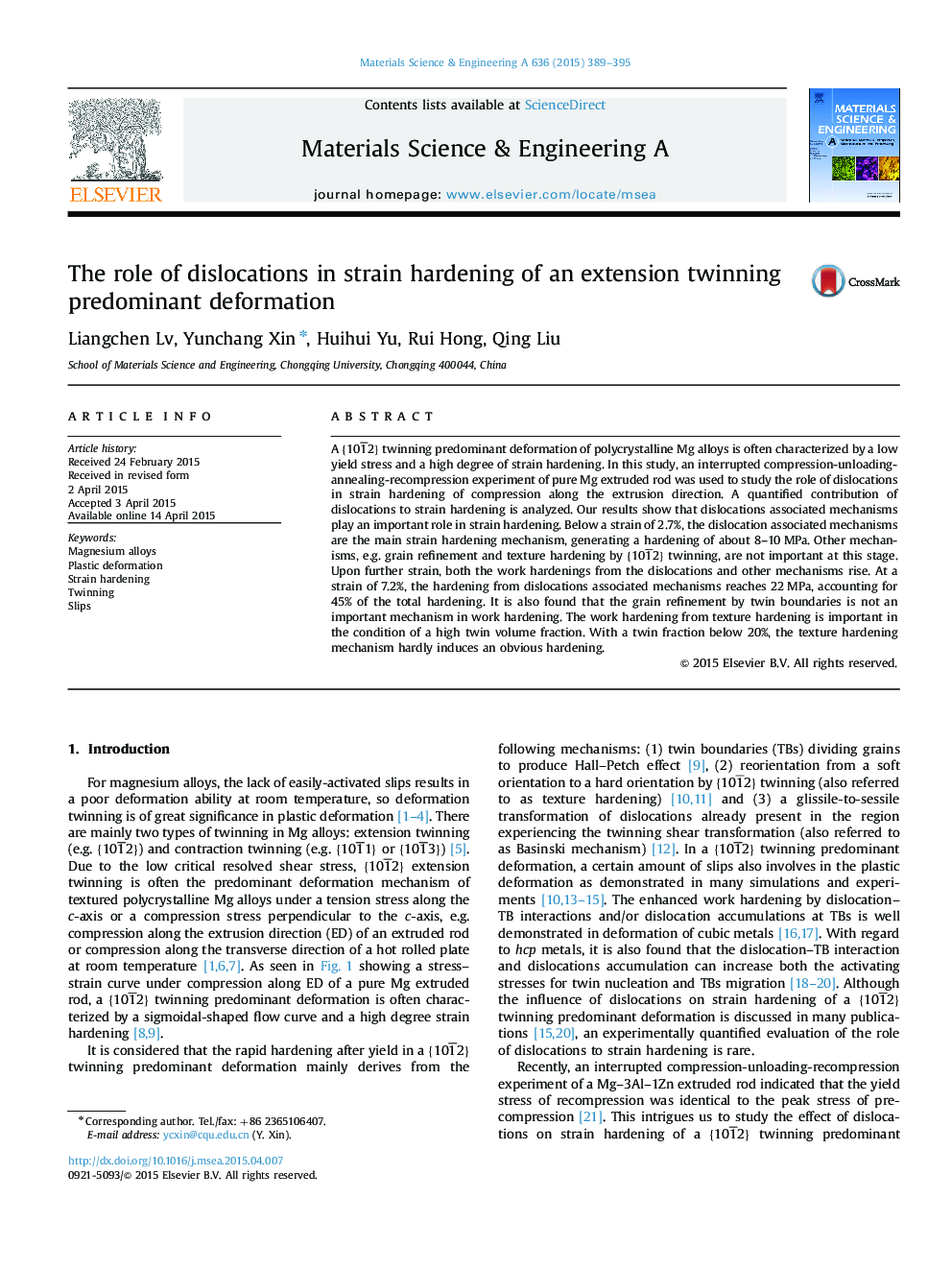| Article ID | Journal | Published Year | Pages | File Type |
|---|---|---|---|---|
| 1574241 | Materials Science and Engineering: A | 2015 | 7 Pages |
Abstract
A {101¯2} twinning predominant deformation of polycrystalline Mg alloys is often characterized by a low yield stress and a high degree of strain hardening. In this study, an interrupted compression-unloading-annealing-recompression experiment of pure Mg extruded rod was used to study the role of dislocations in strain hardening of compression along the extrusion direction. A quantified contribution of dislocations to strain hardening is analyzed. Our results show that dislocations associated mechanisms play an important role in strain hardening. Below a strain of 2.7%, the dislocation associated mechanisms are the main strain hardening mechanism, generating a hardening of about 8-10 MPa. Other mechanisms, e.g. grain refinement and texture hardening by {101¯2} twinning, are not important at this stage. Upon further strain, both the work hardenings from the dislocations and other mechanisms rise. At a strain of 7.2%, the hardening from dislocations associated mechanisms reaches 22 MPa, accounting for 45% of the total hardening. It is also found that the grain refinement by twin boundaries is not an important mechanism in work hardening. The work hardening from texture hardening is important in the condition of a high twin volume fraction. With a twin fraction below 20%, the texture hardening mechanism hardly induces an obvious hardening.
Related Topics
Physical Sciences and Engineering
Materials Science
Materials Science (General)
Authors
Liangchen Lv, Yunchang Xin, Huihui Yu, Rui Hong, Qing Liu,
